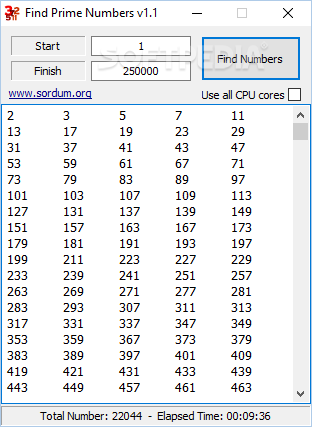

That proof, along with a series of additional conjectures that Weil made-the Weil conjectures-established finite fields as a rich landscape for mathematical discovery. He proved arguably the most important problem in mathematics-the Riemann hypothesis-as interpreted in the setting of curves over finite fields (a problem known as the geometric Riemann hypothesis). Weil used this connection to spectacular effect. “There is an ancient analogy between integers and polynomials, which allows you to transform problems about integers, which are potentially very difficult, into problems about polynomials, which are also potentially difficult, but possibly more tractable,” Shusterman said.įinite fields burst into prominence in the 1940s, when André Weil devised a precise way of translating arithmetic in small number systems to arithmetic in the integers. But they’re analogous to a hurricane simulator-a self-contained universe that provides insights about phenomena in the wider world. Example of prime: A few examples of prime numbers are 2, 3, 5, 7 and 11 etc.Finite fields and prime polynomials might seem contrived, of little use in learning about numbers in general.We can see that they have only 1 as their common factor, therefore, they are coprime numbers. The factors of 13 are 1 and 13 and the factors of 15 are 1, 3 and 5. Example of co-prime: 13 and 15 are co-primes.Unlike composite numbers, prime numbers have only two factors, 1 and the number itself. A co-prime number can be either prime or composite, but its greatest common factor (GCF) must always be 1.In contrast, prime numbers do not have such a condition. Co-prime numbers are numbers that have no common factor except 1.Coprime numbers are always considered as a pair, whereas a prime number is a single number.Listed below are the differences between prime and co-prime numbers. It is important to distinguish between prime numbers and co-prime numbers. Each composite number can be factored into prime factors and individually all of these are unique in nature.Two prime numbers are always coprime to each other.In other words, we can say that 2 is the only even prime number. Except 2, all other prime numbers are odd.

Every even positive integer greater than 2 can be expressed as the sum of two primes.Every number greater than 1 can be divided by at least one prime number.

A semiprime number is a product of two prime numbers. Lemoine’s Conjecture: Any odd integer greater than 5 can be expressed as a sum of an odd prime (all primes other than 2 are odd) and an even semiprime.Prime Number Theorem: The probability that a given, randomly chosen number n is prime is inversely proportional to its number of digits, or to the logarithm of n.Fermat’s Little Theorem: If n is a prime number, then for every a, 1 ≤ a ISRO CS Syllabus for Scientist/Engineer Exam.ISRO CS Original Papers and Official Keys.GATE CS Original Papers and Official Keys.DevOps Engineering - Planning to Production.Python Backend Development with Django(Live).
#Prime numbers android
#Prime numbers full


 0 kommentar(er)
0 kommentar(er)
